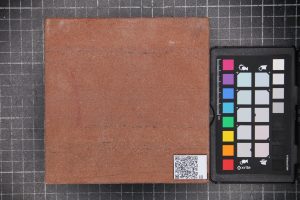
| <stone name> | |
| Reference | I8 |
| NAME | Corncockle |
| TYPE | Sandstone |
| GEOLOGY | Permian |
| COUNTY | Dumfries |
| COLOUR | Dark red |
| TEXTURE | Medium grained |
| BLOCK SIZE LXBXH (mm) | 3000x2000x500mm |
| SUITABILITY | Ashlar, cladding, dressings and weathering courses |
| USES (1) | Old Masonic Hall, Leeds |
| USES (2) | Cathedral Court, Leeds |
| USES (3) | Caledonian Hotel, Edinburgh |
| USES (4) | Leith Academy, Edinburgh |
| Stone Names |
| Corncockle Sandstone | Corncockle Sandstone was sourced from quarries around the town of Lochmaben, in Dumfriesshire. The stone consisted originally of wind-blown sand that was deposited as sand dunes in a desert environment during the early part of the Permian Period (c. 285 million years ago), when Scotland was at roughly the same latitude as southern Ethiopia is today. A tiny proportion of iron, which is in an oxidised (‘rusted’) state, gives the stone a rich orange colour. Corncockle Sandstone has been used locally, regionally and nationally, mainly to form masonry. Corncockle Sandstone is not quarried for building stone today. | Corncockle Sandstone — Building Stone Database Scotland (bgs.ac.uk) |